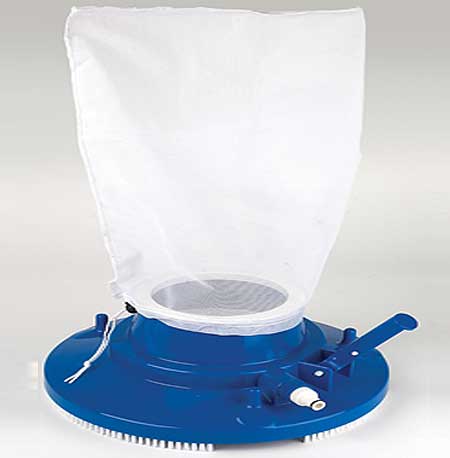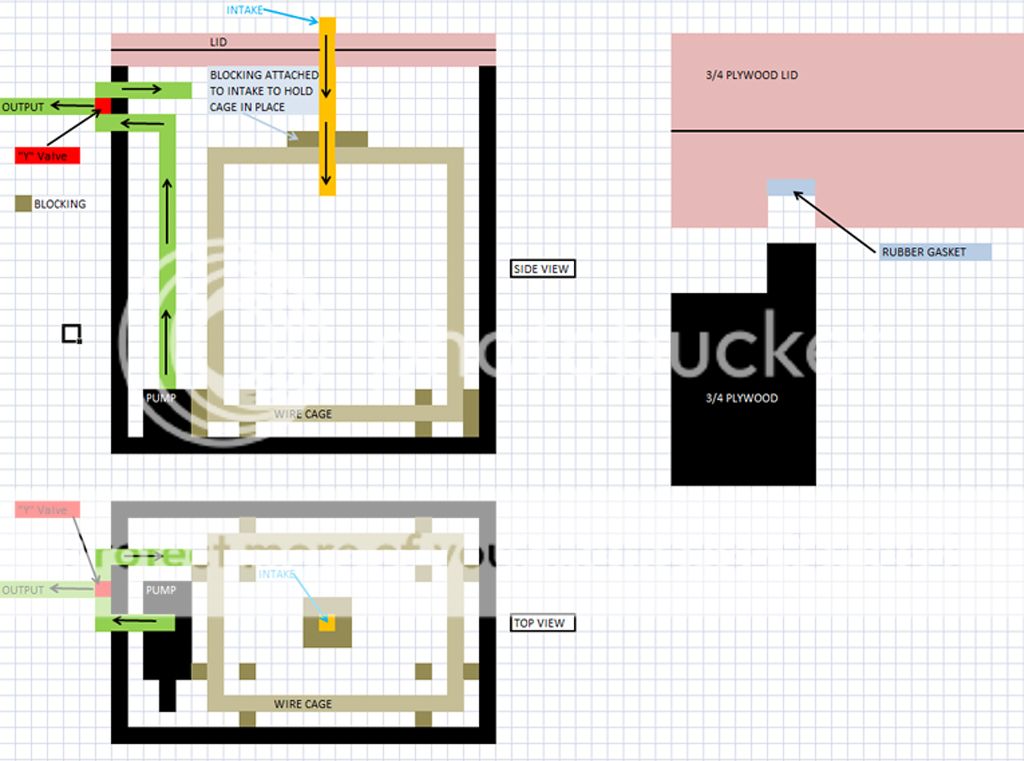I like the plywood idea. Never thought of that. Since these vacs are only used once in a while it should hold up fine. And besides, these things always need revisions so building prototypes as cheap and fast as possible to learn faster is a good idea imo.
You'll only want a rubber gasket on one side. In the lid's dado would be my preference to keep it protected. Two gaskets only provide more opportunity for leaks, the extra surface between the 2 gaskets.
You're right about the clogging...it all depends on what is vacuumed. String algae will screw anything. And even leaves act differently depending on the type and how decomposed. You just never know. In my case I needed vacuums that would handle any case.
The Y to try and keep the grate from clogging is interesting and worth a try, but I'm not hopeful. I have seen similar type ideas on filters. The most successful would probably be the rotating drum filters. If you haven't seen these it is worth a check, might give you some ideas. And in very high end industrial filters the concept of automatically washing grates is used including long rotating mats. Also a good source of ideas. Learn from their hard work I say.
The reason I'm not hopeful is just the mechanics of water pressure. The pump creates a lower pressure which is why water comes thru the grate. Pushing water back up thru the grate would keep that small spot clear, but would not allow any water to flow down thru the grate in that open spot because water is being forced thru that spot in the opposite direction. I expect where ever water can flow down thru the grate will clog and the Y will keep a visibly clear spot but water will still not be able to pass so the grate effectively would be clogged, stopping water getting to the pump which cuts off flow thru the Y which would then allow water to go down thru the open spot and it to would clog.
I understand your thinking that the Y would keep the debris stirred up so it wouldn't "settle" on the grate. Unfortunately that's only wishful thinking. Water pressure in the upper chamber is higher than the lower, again, why water flows thru the grate. So any debris getting close to the grate will have a higher pressure above it pushing down. It glues it in place. Remember you already have a lot of turbulence from the incoming pipe. You could for example move the incoming pipe down, parallel with the grate, so the incoming water flowed across the grate to keep it "clean". But that fails too for the same reason, different water pressures.
What people have tried to do is make that Y flow move around the grate, The rotating drum moved the grate instead of the water jet. Moving the grate out of the water and washing it always seems to be a key feature, but that doesn't help you.
So maybe a rotating drum instead the tank. I personally wouldn't bother, just tossing ideas around.
One of the things I did, and you can see it in the Silt Vac's leaf trap, is make the grate surround the pump. Basically the grate would be the shape of the inside but 1-2" smaller.
I like Fig B best because as the grate clogs it expands and presses against the sides and bottom. So the sides can stop it from breaking. And it's easier to build a floor to stop it there too. Fig A, once clogged, will be just like the tank and collapse.
It's worth pointing out the small amount of space in Fig A for debris to collect. There is a Catch-22 with these things. Fig B looks like it could hold a lot of debris, but it doesn't hold any more the Fig A because these only hold as much as will clog the grate.
It does take a certain thickness of material to actually clog water flow since water will flow thru debris to some degree. I make the grate have as much surface area as possible rather than total volume. Firstly because if it takes 2" of a debris to clog water flow if I have 5 times more surface area I can catch 5 times more debris before clogging. For example, say the area inside the tank above the pump was 1'x'1'x1. If I only lay a grate across the bottom, like in your picture, I'd have a 1 sq ft grate. But in Fig B I'd have almost that same bottom grate plus 4 sides for a total of almost 5 sq ft.
There is another benefit to more sq ft. It spreads out the amount of watering flowing thru the grate at any one point which reduces the water pressure at that point. This reduces the compaction of the debris which allows a thicker layer of debris while still allowing water thru. So that's another maybe 25-50% more debris to be collected.
I used this same principle to collect extremely fine suspended particles in a fabric filter. The particles collect on the fabric but still allow water to flow thru very slowly so that the particles themselves became the primary filter media trapping smaller and smaller particles. That's exactly how a diatomaceous earth pool filter works. The trick is reducing water flow to almost zero and that's done by making a huge (long and skinny) filter.




